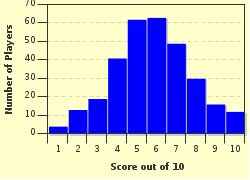Quiz Answer Key and Fun Facts
1. When George, Elector of Hanover, acceded to the British throne in 1714 as King George I he was not universally accepted. Why not?
2. In 1727 George I of Great Britain was succeeded by his son, George II. Which of the answers is NOT true about about George II?
3. Most people think the last invasion of mainland Britain took place in 1066. The French, however, landed a small force in 1797. Where did they land?
4. The Battle of Waterloo is remembered for the victory of Wellington. He wasn't the only 'allied' commander though. Which two other armies formed official contingents?
5. After many years of campaigning by anti-slavery organisations the British government finally introduced a bill to begin the abolition slavery. In which year was this bill introduced?
6. When the future Queen Victoria was a young girl she was subjected to a rigorous regime devised by her mother and Sir John Conroy. What was this system called?
7. During the reign of Queen Victoria there were two rebellions in Ireland to try and end British rule.
8. In May 1926 Britain suffered a General Strike by workers in key industries including dockers, rail workers, printers and transport workers. What was the main reason the strike was called?
9. Following World War Two several issues were identified by economist William Beveridge which needed to be addressed to make Britain a better place to live. To solve these problems the Labour government established the welfare state. Which of the listed solutions was NOT part of the new welfare state?
10. Several events occurred in Britain during the 1990s. Which of the listed events happened first?
Source: Author
romeomikegolf
This quiz was reviewed by FunTrivia editor
bloomsby before going online.
Any errors found in FunTrivia content are routinely corrected through our feedback system.

